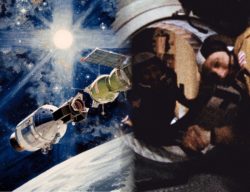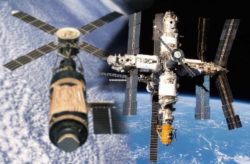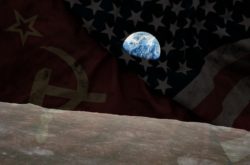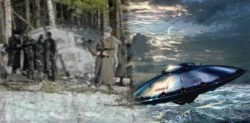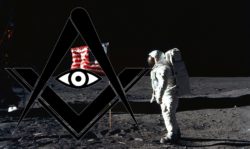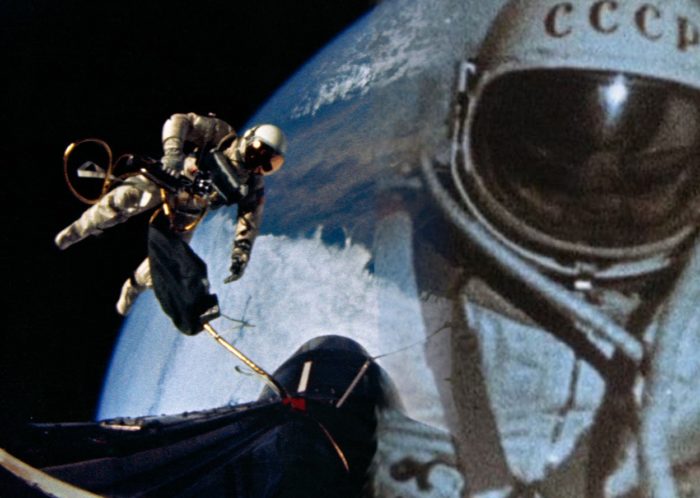
Into The Heavens: The First Humans In Space And The Underlying Drive Of The Cold War
- By
- December 22, 2020
- September 29, 2021
- 15 min read
- Expert Opinion
- Posted in
- Space, History
In our article looking at the very early history of the Space Race we examined how the roots of the drive to reach the stars resided in the desire of the Nazis to create ever more advanced weaponry during the Second World War.

The Space Race saw the USA and Soviet Union attempt to outdo each other
Following the end of this most bloodiest of conflicts, a new, almost unspoken war began – the Cold War – which would see the United States and the Soviet Union look increasingly suspiciously at each other amid their desires to promote their opposing ideologies. Out of this suspicion, each country began to pick-up as many of the advanced Nazi scientists as they could, so that they might continue their advanced weapons work for them, weapons that would ultimately develop into rockets that would reach into outer space.
These first steps in reaching the stars changed from sending high-powered rockets into the upper atmosphere (resulting in the first-ever picture of our planet) to placing the first satellites into orbit and even sending a probe successfully to the moon. As the 1950s drew to a close, and with the United States and the Soviet Union looking to outdo each other in their cosmic achievements, attention began to turn toward sending a person into space and into orbit around Earth.
Contents
- 1 The Vostok 1 Mission – The First Human In Space
- 2 Project Mercury – The First Steps Of America Into Space
- 3 The Promise To Shoot For The Moon
- 4 Further Soviet Advances And The Voskhod Programs
- 5 Project Gemini – The United States Become Front Runners In The Space Race!
- 6 The Tragic Consequences Of Cosmic Advancement
- 7 Finally, Within Reach Of The Moon
- 8 Expert Opinion
The Vostok 1 Mission – The First Human In Space
There is no doubt whatsoever that the Space Race was significantly ratcheted up a notch on 12th April 1961 when 27-year-old Soviet Air Force pilot, Yuri Gagarin was successfully launched into space before orbiting the planet.
The roots of the eventual historic mission went back to May 1960 with the Soviet Union launching several unmanned vehicles in order to test the Vostok.
When Sergei Korolev asked the pilots who should be the first person to sit in the Vostok, Yuri Gagarin immediately stepped forward. According to the book Space Race: The Battle To Rule The Heavens, Deborah Cadbury demonstrates intricately how Gagarin was already the unofficial frontrunner and leader of his cosmonaut peers. [1]
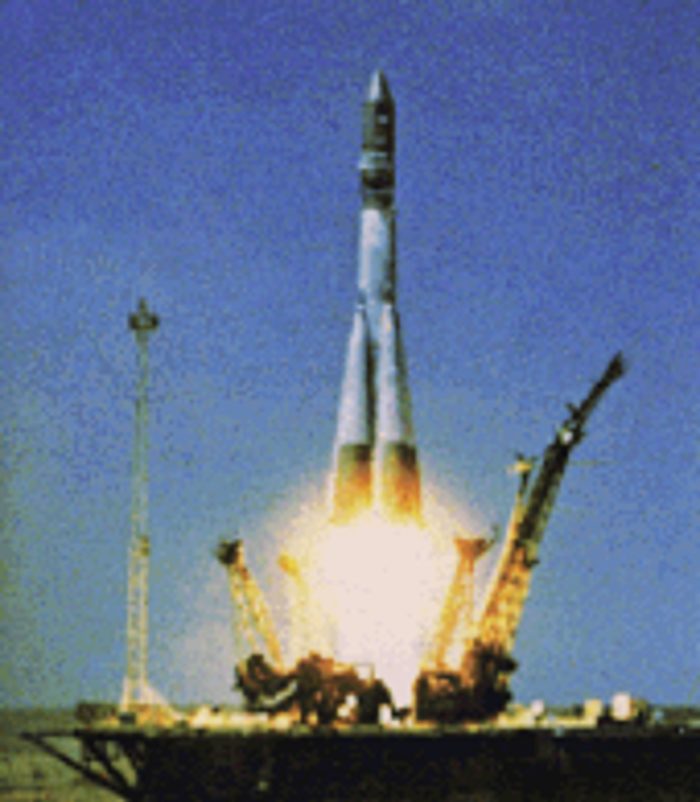
The Vostok 1 launching
She writes of Korolev noticing his “natural sense of respect as he removed his shoes before climbing into the pristine silver sphere”. Although the official decision on who would be the first person in space wasn’t made until days before the actual mission, it was obvious to Korolev that Gagarin his preferred option.
However, the final decision was not that of Korolev alone. The head of cosmonaut training, Nikolai Kamanin had a lot of sway in the final choice. And according to his notes, he was much more in favor of Gherman Titov being selected. However, it would appear that he wished to save his preferred choice for the planned Vostok 2 mission, which would see a person – in theory – spend a much longer amount of time in orbit. And so, albeit in a backhanded way, recommended that Gagarin would pilot Vostok 1.
The Countdown To History
At a little after 7 am (local time) on the 12th April 1961, Yuri Gagarin positioned himself inside the Vostok 1. With him were supplies for approximately 10 days in case of any errors with the retrorockets which would leave him in orbit. It would be a further two hours before the launch itself. Gagarin, whose face was present on the large screens in the control room, would calmly chat with the engineers during this time.
Perhaps as a grim reminder of the Cold War that was raging in the background, as Gagarin was being transferred to the launch site, an engineer had painted the letters CCCP on his helmet in bright red, reasoning that when he did make it back to earth, he might be arrested or even shot as a suspected American spy.
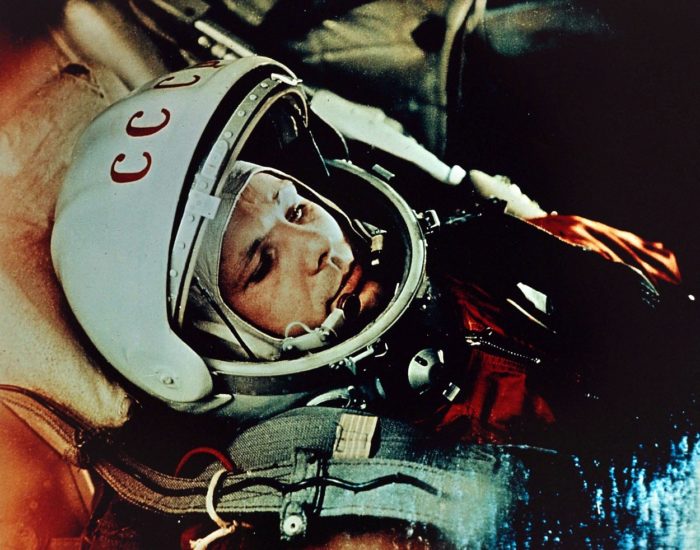
Yuri Gagarin
The vehicle itself would be entirely under the control of ground control or at the mercy of the automatic systems on board. In fact, the manual controls were locked to prevent their use. This was largely due to the uncertainty as to how a person might react, mentally and physically, to the weightless environment of space.
However, an envelope had been placed on board the craft, seemingly without Gagarin being aware of it, that contained the code for the override in the case of a dire emergency. We know now that several people, including Korolev himself, secretly informed Gagarin of the code before he left the ground.
Following the hours of waiting, including an apparent scare that the hatch to the cabin hadn’t sealed properly prompting a hasty unbolting and refastening of it, Gagarin prepared to be launched into the great unknown.
“I Can See The Earth!”
At a little after 9 am, Vostok 1 left the launch pad at Baikonur Cosmodrome spaceport. Two minutes later, with all going as it should, the four booster rockets – now free of their fuel – detached and dropped away. Three minutes after this, the second set of rockets finished their task and also dropped away. A minute later, Gagarin would state to ground control:
…the flight is continuing well. I can see the Earth. The visibility is good…I almost see everything…
In a further four minutes, Vostok 1 reached orbit, and the last rocket detached from the cabin holding Gagarin. The entire sequence, from leaving the ground to reaching orbit had taken ten minutes.
Once in orbit, Gagarin looked down on the Earth, marveling when he crossed from the daylight of the Soviet Union and Europe and into the nighttime of North America and Hawaii. He would spend just over an hour going around the planet before the craft placed itself in position to attempt reentry at 10:25 am while over the west coast of Africa.
However, after the retrofire kickstarted the descend, the reentry module failed to detach as it should. As the craft began its reentry ten minutes later, however, (now over Egypt), the module did finally separate, and the capsule settled on to its correct course. At 10:55 am, still over 8,000 feet above the ground, Gagarin was ejected from the falling capsule with his parachute opening several seconds later.
By 11:05 am, he was safe, on the ground just short of 20 miles from his targeted area.
In Moscow, and throughout the Soviet Union, a feeling of national pride swept the nation. And they were quick to announce the success of the mission to the world. For now, they were undoubtedly ahead in the fast-developing space race.
The short video below looks at Gagarin’s historic space flight a little further.
Project Mercury – The First Steps Of America Into Space
While the Soviet Union was progressing with their eventual successful manned flight into orbit, the United States was scrambling to achieve their own success. Much like the Soviets, the eventual successful manned space mission of Alan Shepard had been several years in the planning, stretching back to the forming of Project Mercury in November 1958 by NASA.
On the morning of 5th May 1961, at a little after 5 am local time, Shepard entered the Mercury-Redstone 3, a craft nicknamed Freedom 7. The launch was planned for 7:20 am, however, this was delayed over two hours due to increased cloud cover impairing visibility. There were then issues with the power supply and one of the computer systems at ground control.
These delays resulted in a further potential problem for Shepard – he now desperately needed to urinate. As this would cause further delays his request to leave the capsule to do so was denied. Instead, Shepard offered that he would simply urinate in his suit to which ground control expressed concerns that doing so would cause the electrodes attached to his body to fail. Both parties eventually agreed to temporarily switch off these electrodes and Shepard did as he suggested.
At 9:34 am, with the visibility now sound and all errors fixed, the Mercury-Redstone 3 left Cape Canaveral in Florida. [2] As it did so millions of people around the United States watched in front of television sets in their homes or bars.
Unlike Gagarin, Shepard was able to take control of the craft once it was in space and had positioned itself with the heat shield the correct way for reentry. He would perform several maneuvers – all of which he had performed several times in the simulator version in preparation for the mission. He would also take several pictures of the Earth below, as well as reporting on exactly what he could see from his position in space.
In total, the flight lasted around 15 minutes – much shorter than the time Gagarin spent in space – but it was a success. Even the spacecraft itself appeared to have been almost unscathed from its suborbital journey.
The video below looks at the mission in more detail.
The Promise To Shoot For The Moon
Although he wouldn’t live to see them happen, the actual touch paper for the Americans eventually landing a person on the Moon came from President John Kennedy, who in May 1961 urged Congress that such a mission to the lunar surface should take place before the end of the decade.
The following year in September 1962, he would deliver the speech he is perhaps most famous for (known as the We Choose To Go To The Moon speech) in which he reiterates very publicly of the desire of the Americans to reach the Moon.
Of course, rather than fear being outdone by the Soviet Union in the Space Race, in reality, Kennedy likely wished to divert attention from the disastrous Bay of Pigs invasion in Cuba. And we might remind ourselves that Cuba would have very likely had backing from the Soviet Union if Kennedy had indeed sent the United States’ military to Cuban shores. This, combined with a particularly hard start to his presidency indirectly increased the urgency in reaching our cosmic neighbor.
Whatever the reason, the President of the United States was suddenly NASA’s biggest supporter, specifically in its desire to place a person on the Moon. And the funding that poured into such a venture was a reflection of that support.
Interestingly or not, Kennedy’s vice president, Lyndon Johnson (who would become President following Kennedy’s assassination in 1963) would use similar tactics in the later years of the decade in his support for landing an American on the Moon. And he would do so to detract attention from the increasingly obvious resentment from the American public regarding the Vietnam war.
Regardless of the reasons, that the desire of the Americans to reach the Moon was real was not in doubt. You can view that famous Kennedy speech that kickstarted that cosmic desire below.
Further Soviet Advances And The Voskhod Programs
Despite the successes of the United States, it appeared the Soviet Union was light years ahead of them. Following the success of Vostok 1 and Gagarin’s historic space flight, further Vostok missions would launch.
On 6th August 1961, for example, Vostok 2 would launch and successfully go into orbit. This time, however, pilot Gherman Titov had manual control of the vehicle, equaling the achievements of the United States.
Less than a week later, on successive days of 11th and 12th August, Vostok 3 and Vostok 4 launched respectively. The two space vehicles were around 4 miles apart – close enough to establish radio contact and remained in the same orbit for a prolonged period of time. Incidentally, Vostok 4 would spend a total of four days in space – a record at the time.
Although it would be almost two years before the launch of the next Vostok mission, the Soviet Union once again launched two vehicles within 24 hours of each other, the Vostok 5 and the Vostok 6, which achieved another first as it was piloted by the first female cosmonaut, Valentina Tereshkova. While this was an important first, it was a decision taken for pure propaganda purposes. It would be almost 20 years (in 1980) when female cosmonauts officially joined the ranks of the Soviet space program.
Following the success of the Vostok launches, the Soviet Union turned its attention to the Voskhod program. The first of these would launch on 12th October 1964 and would feature a three-man crew – something that had not previously been attempted. Another bizarre first was also achieved during this mission – the crew did not wear spacesuits. However, this was not by design and was the case simply due to the limited space inside the cabin. Had something gone wrong, the crew members would have been at risk of fatal consequences.
Perhaps in anticipation of the first Gemini spaceflight of the United States (which we will examine shortly), on 18th March 1965 came another first with the launch of the Voshkod 2 when one of the pilots, Alexei Leonov became the first person to perform a spacewalk, another milestone bagged by the Soviet Union.
Despite the success of the two Voskhod launches, the third and fourth planned missions had been canceled before the second Voskhod had even left the ground. The reason was simple. The Soviet Union, now clearly ahead in the Space Race, were now turning their attention to landing a cosmonaut on the Moon. The United States, however, were beginning to make advancements of their own. And political change and perhaps the paranoia of the Soviet Union would see their initial advancements slow drastically.
The video below looks at these early Soviet advances.
Project Gemini – The United States Become Front Runners In The Space Race!
Although the moon landings were what truly saw the United States “win” the Space Race, the Gemini missions allowed them to show their equal worth in space exploration, and ultimately would place them ahead of their Soviet rivals. Not least as many of the achievements from the Gemini missions would lead to the eventual Apollo missions and their ultimate success.
For example, many of the missions were far longer than a few hours, or even a few days, some as much as two weeks. This showed to NASA, and indeed the Soviet Union, that when they finally launched a mission to our cosmic neighbor, their astronauts were more than capable of spending the required time (eight days) it would take to get there.
They further managed to meet waiting spacecraft and even dock with them, as well as performing spacewalks while undertaking various tasks on the vehicles themselves. What’s more, the Gemini missions would send two people to space together. This would ultimately progress to three-man crews of the Apollo missions.
Following two unmanned Gemini test missions, Gemini 3 was launched from Cape Kennedy Air Force Station in Florida on 23rd March 1965 with Gus Grissom and John Young piloting. It was their job to essentially put the Gemini through several tests in order to test its capabilities, as well as those of the astronauts themselves. Their mission, largely successful, was just short of five hours.
Just over two months later on 3rd June, Gemini 4 was launched with James McDivitt and Ed White piloting. And unlike the previous Gemini mission, this one would last four days. During this mission, somewhere over Hawaii and New Mexico while orbiting the Earth, Ed White “stepped” out into space and became the first American to perform a spacewalk only weeks after Soviet cosmonaut, Alexei Leonov had done so.
White appeared to very much relish the experience, performing somersaults and “floating” as if lying down, in total awe at the surreal sight of the blue planet waiting below. The walk was planned to last 12 minutes. However, White remained outside for much longer (21 minutes). He was eventually ordered back into the Gemini before they entered the “night time” of the planet. Although he struggled to safely reenter the craft, he eventually did so. He would tell the control below that:
There was very little sensation of speed. The view was something spectacular. I could see the outlines of cities (and) roads. I could see the wakes of ships at sea!
The short video below looks at the historic moment for NASA and space exploration a little further.
Further Gemini Successes
The Gemini missions would continue to set records and reach further levels of success. Just short of three months later on 21st August, for example, the fifth Gemini mission would get underway. This time the crew of Gordon Cooper and Pete Conrad would spend eight days in space, a new record at the time.
When the Gemini 7 mission was launched on 18th December, the crew of Frank Borman and Jim Lovell would spend 14 days orbiting the Earth. On their 11th day in orbit, the Gemini 6 – piloted by Wally Schirra and Tom Stafford – would approach the Gemini 7 and performed the first successful space rendezvous. They would then orbit the Earth in formation to each other – something not achieved at such a level by the Soviet Union and perhaps nudging the United States into leading the Space Race.
As impressive as the rendezvous was, the achievements of the Gemini 8 mission would surpass it, and further place the United States ahead of the Soviet Union. Piloted by Neil Armstrong (who eventually become the first man on the Moon), along with Dave Scott in March 1966, the Gemini 8 would target the Agena stage that had previously been placed in orbit. After circling the Agena, Armstrong would successfully dock with it
However, within moments of this historic first came the onset of a potential disaster. The two docked vehicles began to spin and go into a roll – a roll that became increasingly faster. Armstrong, at first believing it was the Agena that was causing the spin, managed to detach the Gemini from it. However, when that resulted in the Gemini spinning even faster, he realized that it was their own vehicle that was the problem.
The Gemini 8 had one of its rocket thrusters open. And what’s more, it was locked in that position. Armstrong made the drastic decision to use the rocket thrusters (which were for reentry) in order to regain control over the vehicle. It was a decision that likely saved their lives. Knowing that they would have to land as soon as possible due to the fuel used from the rocket thrusters, Armstrong guided the Gemini 8 through reentry and to a makeshift landing site in the Pacific Ocean just short of 500 miles from Okinawa.
They were soon picked up by air force rescue team and taken to safety on a nearby US Navy vessel. Incidentally, while Armstrong was already a respected and experienced pilot, it was the way in which he remained calm under the extreme pressure of the emergency during the Gemini 8 mission that likely made him the first choice for guiding the upcoming Apollo mission to landing on the Moon.
A second spacewalk from the United States took place during the Gemini 9 mission in June 1966 when Gene Cernan stepped into the great beyond from his space vehicle. Further successful spacewalks took place during the Gemini 10 (Mike Collins), Gemini 11 (Dick Gordon), and Gemini 12 (Buzz Aldrin) missions. Incidentally, the Gemini 12 mission was the last in the Gemini program.
As we will examine shortly, this success spurred on the United States to reach the moon before the Soviet Union. And with America not fully understanding just how far behind them their Cold War rivals actually were, the temptation to push forward their attempts for a lunar visit became too much to resist, something which indirectly led to tragic consequences.
The short video examines the Gemini missions a little further.
The Tragic Consequences Of Cosmic Advancement
Of course, underlying these momentous achievements on each side of the Cold War divide came several failures that resulted in the tragic loss of lives. And, as far as the Soviet Union are concerned, many of these were kept hidden from the west, and in some cases from their own people, for decades.
For example, only weeks before Yuri Gagarin’s historic mission into orbit around the planet, another Cosmonaut, Valentin Bondarenko would suffer the most horrific death. In late March 1961, as he was coming to the end of another day of isolation and endurance tests (something generally hated by all cosmonauts) he removed the medical sensors and began to cleanse his body with cotton wool soaked in alcohol.
However, when he threw the alcohol-soaked cotton wool to the ground it landed on an electric plate that was used to boil water to make tea. Because the sealed room was full of around 50 percent pure oxygen, when the cotton wool ignited, which Bondarenko then attempted to put out with his sleeve, the entire chamber was alight in flames within seconds.
It would take those monitoring the experiments almost 30 minutes to open the chamber and come to the cosmonaut’s aid. He had suffered horrific burns over his entire body. So bad, in fact, that his eyes had melted completely away. He would die several hours later in hospital.
In the book Space Race: The Battle To Rule The Heavens, Deborah Cadbury informs us that “news of the accident was suppressed for 25 years”.
In the United States arguably the worst disaster (at the time) occurred several years later in early 1967 during tests for the first manned Apollo mission following the successful Gemini missions.
On the 27th of January, Virgil Grissom (Command Pilot), Ed White (Senior Pilot), and Roger Chaffee (Pilot) would take part in a full ground test. The tests themselves had already gone on for hours (as was relatively normal). However, a little after the fifth hour of communications between ground control and the Apollo vehicle cut out.
At ground control, engineers simply sat around impatiently awaiting for communication to return. However, when the sound of Ed White screaming “Fire!” came out of the monitors, quickly followed by Grissom stating, “We’ve got a fire in the cockpit!”, they knew something had gone very wrong.
As they turned their attention to the visual monitors, they witnessed a grim, bright glow coming from inside the Apollo vehicle. They could barely make out the figures of the crew attempting to open the hatch doors.
Next came the voice of Chaffee, pleading:
Get us out! We’ve got a bad fire. We’re burning up!
When engineers on the ground realized the situation and began to surge toward the test vehicle, an explosion suddenly rang out and flames surged out of a gaping hole of the Apollo. Due to the extreme heat of the fire, as well as the toxic smoke as a result of the electronic materials inside the craft, it would several minutes before a rescue crew could gain access to the seared craft.
The three astronauts were practically melted together such was the heat of the fire (approximately 2,500 degrees F.). It was determined that the astronauts had died less than a minute after the fire broke out due to the toxic smoke that was released into their lungs.
The video below looks at the tragic incident a little closer.
Several months after the Apollo disaster in the Soviet Union, came the death of Vladimir Komarov during the Soyuz 1 mission in late April 1967. The mission itself was to be three days long. However, multiple faults and problems prompted those on the ground to abort the mission on the first day and bring Komarov back to Earth.
Tragically, though, shortly after re-entry, the parachute system failed causing an error with the primary chute. The reserve chute also failed when it became entangled. With nothing to slow his descent and unable to escape the stricken craft, Komarov was hurtling toward the ground at almost 90 miles per hour. When the Soyuz 1 did slam into the ground it exploded immediately killing Komarov.
The video below looks at these tragic events a little further.
Finally, Within Reach Of The Moon
As the 1960s progressed into its final years, despite, or perhaps because of the tragedies that had hit each side, the realization of reaching the Moon began to become much more of a possibility, if not a certainty. Due to the secrecy of the Soviet Union, however, the United States rarely knew how much closer they were to reaching their cosmic destination. As far as they were aware, the Soviets’ technology and engineers were of superior quality and would likely land on the Moon first.
It is perhaps a little ironic, then, that this perception of the Soviets beating them to the Moon arguably spurred the United States even more to get there first.
As we will examine in another article when the United States finally did land on the Moon, not only did they win the space race, but the tentative seeds were sewn for further cooperation between the two ideologically opposed nations. Perhaps this is something we should consider given that many people view such efforts to reach the stars as a waste of time, energy, and money. That two opposed nations should begin to find ways to work together for the greater good is surely no bad thing.
The fact is, although there was an increase in such cooperation, the space race still continued for another 20 years, albeit in a much more reserved manner as each nation turned their attention not just to the Moon, but to other planets altogether until the fall of the Soviet Union changed the international landscape significantly.
The short video examines 1960s space exploration a little further.
Expert Opinion
The central claim holds that Cold War rivalry, fueled by rocket expertise transferred from Nazi-era scientists, propelled humanity’s earliest ventures into outer space. As illustrated by trailblazing missions like Yuri Gagarin’s historic orbit and Alan Shepard’s suborbital flight, the Soviet Union and the United States vied for cosmic supremacy. These breakthroughs paved the way for ever more audacious objectives, culminating in the lunar missions that followed.
Nevertheless, some contend that Soviet advancements may have been exaggerated due to concealed setbacks, while NASA’s own tragic Apollo 1 incident showed that progress carried significant risks. Even so, a multitude of record-setting milestones on both sides signals legitimate technical achievements, suggesting that Cold War pressures undeniably accelerated space exploration. Ultimately, the push toward the Moon blended genuine scientific purpose with political priorities.
Evidence demonstrates major technological gains from both nations, yet secrecy and propaganda leave certain details open to debate.
Marcus Lowth is an expert on this topic and has over 20 years experience studying and reporting in these fields. Marcus has written several books and appeared on TV shows as an expert investigator discussing these topics.
Fact Checking/Disclaimer
The stories, accounts, and discussions in this article may go against currently accepted science and common beliefs. The details included in the article are based on the reports, accounts and documentation available as provided by witnesses and publications - sources/references are published above.
We do not aim to prove nor disprove any of the theories, cases, or reports. You should read this article with an open mind and come to a conclusion yourself. Our motto always is, "you make up your own mind". Read more about how we fact-check content here.
Copyright & Republishing Policy
The entire article and the contents within are published by, wholly-owned and copyright of UFO Insight. The author does not own the rights to this content.
You may republish short quotes from this article with a reference back to the original UFO Insight article here as the source. You may not republish the article in its entirety.
